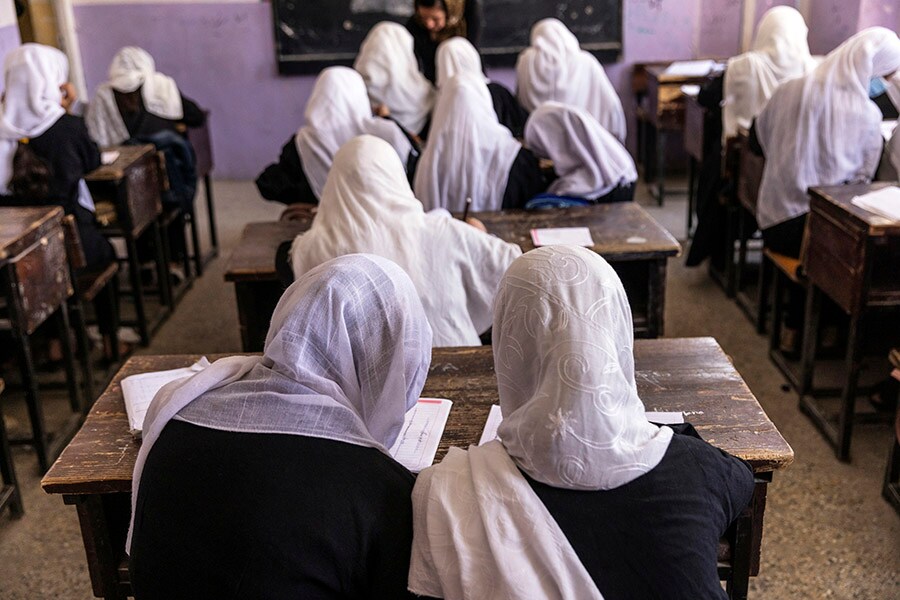
A harsh new reality for Afghan women and girls in Taliban-run schools
Just as they did when they ruled most of Afghanistan in the late 1990s, the Taliban seem intent on ruling not strictly by decree, but by inference and intimidation
 Girls attending class at a school for girls in Kabul on Wednesday, Sept. 15, 2021. Afghanistan’s new government is likely to severely restrict education for girls and women despite the Taliban’s claims that schooling will eventually resume. last week. (Victor J. Blue/The New York Times)
Girls attending class at a school for girls in Kabul on Wednesday, Sept. 15, 2021. Afghanistan’s new government is likely to severely restrict education for girls and women despite the Taliban’s claims that schooling will eventually resume. last week. (Victor J. Blue/The New York Times)
KABUL, Afghanistan — The director of a girls’ school in Kabul desperately wants to learn details of the Taliban’s plan for girls’ education. But she can’t attend the weekly Taliban committee meetings on education. They are for men only.
“They say, ‘You should send a male representative,’” the director, Aqila, said inside the Sayed Ul-Shuhada High School, which was shattered in May by a terrorist bombing that killed scores of girls.
But Aqila and other Afghan educators don’t need to attend meetings to comprehend the harsh new reality of education under Taliban rule. The emerging government has made clear that it intends to severely restrict the educational freedoms enjoyed by many women and girls the past 20 years.
The only question is just how draconian the new system will be, and what type of Islamic-based education will be imposed on both boys and girls. Just as they did when they ruled most of Afghanistan in the late 1990s, the Taliban seem intent on ruling not strictly by decree, but by inference and intimidation.
When schools reopened Saturday for grades seven through 12, only male students were told to report for their studies. The Taliban said nothing about girls in those grades, so they stayed home, their families anxious and uncertain about their future. Both boys and girls in grades one through six have been attending schools, with students segregated by gender in the higher three grades.
©2019 New York Times News Service







